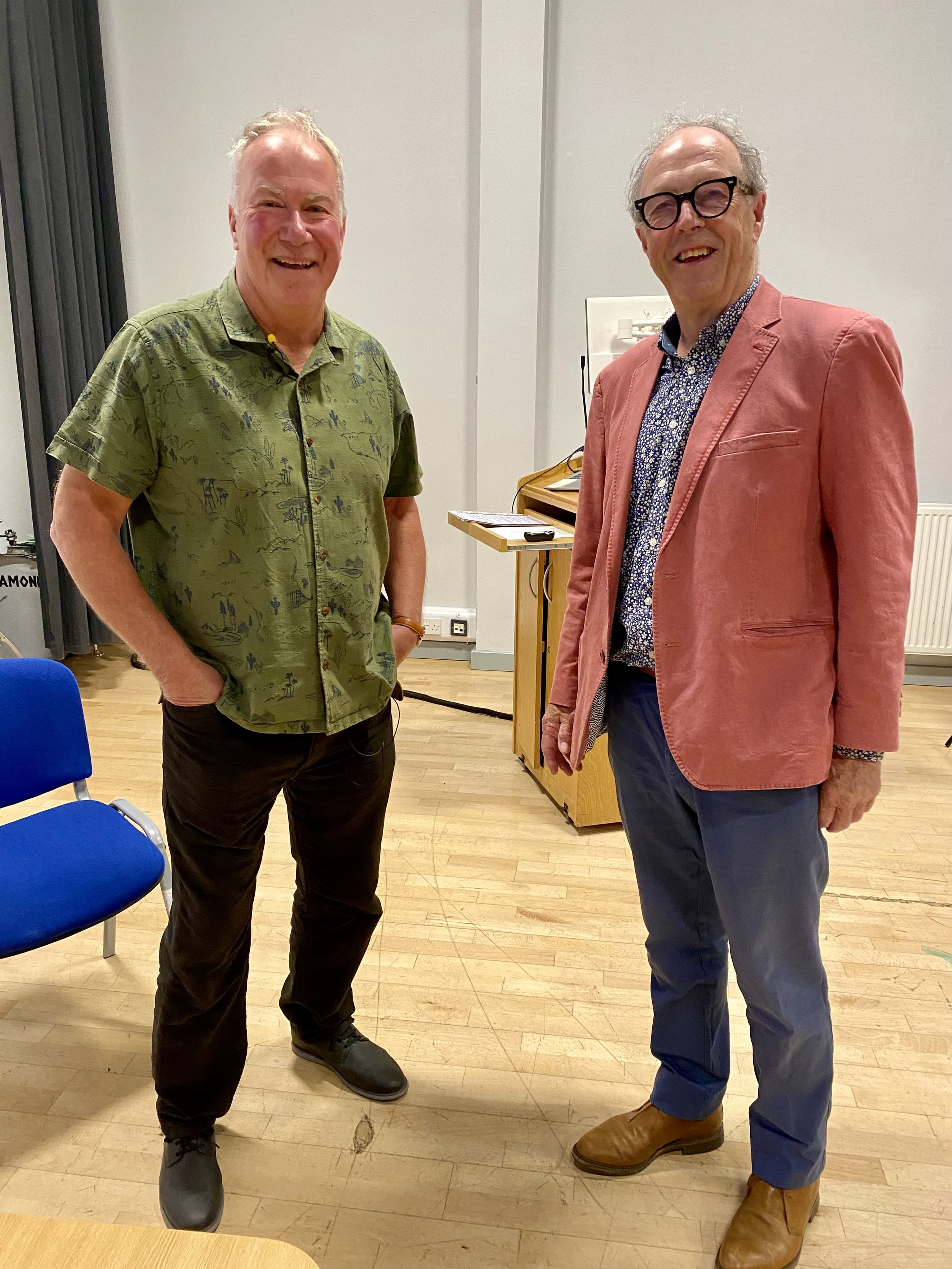Event date: 15 May 2025
Review by Danusia Wurm
Trevor Burgess at the Blake Studio, Norwich School
Artist David Hockney has said, “I prefer living in colour.” And this could apply equally to artist-curator Trevor Burgess whose beautifully articulated talk explored the “slippery” properties and perplexities of colour and how artists attempt to render its sensation.
Exploring the difference between the colour of paint and the colour of light; colour as space and colour as light, Burgess took the audience on a journey that was part science and part experiential. As Burgess succinctly puts it “How inadequate words are for describing colour sensation! That’s why artists use paint”.
Most of Burgess’ work relates to his daily visual experience. “I usually paint from photographs I have taken. In making paintings from these I am seeking to recover a memory of something I saw and what I felt about it”. Inspired by a quote attributed to Plato "A thing is not visible until it is seen", Burgess is also motivated to depict elements of contemporary life that are not often treated in painting. He says “Painting has an important role in making things seen”.
Quoting Plato is not surprising given that Burgess initially studied literature, going on to train and work as Assistant Curator at the Norwich Gallery for four years at the time of the establishment of the ‘East’ international exhibition. He founded and steered the development of the Warehouse Artists’ Studios in Norwich, where he was based from 1990 to 1997.
Completing an MA Winchester School of Art in European Fine Art, Burgess moved to Barcelona in 1997. During this period he produced a series of large, figurative paintings exploring the relationships of families and children.
After returning to the UK in 1999 to live in London, he became interested in the characteristics of the urban space around him as subject matter. He began using his own photographs of people’s daily lives in the city as a source. A strong and constantly recurring theme of Burgess’ practice is his painting of street market stalls and shops in his home city of London and various other urban settings painted during his extensive travels.
“Living in a city I am affected by the urban environment around me, and for over twenty years my paintings have been a celebration of London's street life and diverse communities. I am interested in social and cultural expression in public space, and civic life in cities. I have also travelled extensively in Europe, Latin America and India, which gives my work an international perspective”.
A series of paintings of homes in London called A Place to Live, inspired by images in newspaper property adverts, took Burgess in a new direction, winning acclaim from Time Out’s art critic Ossian Ward for The Discerning Eye 2011.
In 2015, he received a commission from Townshend Landscape Architects for a triptych painting of Granary Square, the centre-piece of the King’s Cross development in London. This generated a series of studies and related paintings.
In recent years, Burgess has become more explicit in asserting and writing about the social context of his paintings, opposing insular, exclusionary and divisive tendencies in UK politics and society. Specifically, the twin crises of Brexit and the Covid pandemic provoked a radical rupture in his work, in which he began experimenting with inverting colour in his paintings.
“My inverted colour paintings were an experiment to see whether colour, the intrinsic material of painting, might be mobilised to oppose and challenge those who seek to foment division and conflict”.
The view of Birling Gap and the Seven Sisters cliffs on the South coast of England was the first painting Burgess produced in inverse colours. He made it the day immediately after the Brexit vote (2016). At its centre is a Union Jack flag, torn, also with its colours inverted.
Equally totemic is where Burgess’ inverts the colours of a painting of the Port of Dover (after Oskar Kokoschka) who fled to Britain from Prague in 1938. “My inverse version of Kokoschka’s painting was completed during autumn 2019 at the height of the parliamentary crisis over Brexit. The painting expressed my fear and forebodings, by making visible the national reversal of the European values that Kokoschka held dear”.
The Inverse Colour paintings were first shown in a solo show at Flashback, London in 2021.
Throughout, a key aspect of Burgess’ practice is his extensive collaboration with other painters, exploring the social context of painting. Where We Live, a national touring exhibition (2021-2023), brought together five artists who examined under-regarded aspects of the social landscape of England.
Most recently (2024), in collaboration with Raksha Patel, Burgess has curated Standing Ground, an exhibition of twelve British artists who use paint to depict the landscapes that belong to them. Collectively, their work offers an intersectional and intergenerational conversation spanning six decades of life in post-war Britain through examining what it means to paint the place that we live in today.
ncas wishes to thank Trevor for his superbly delivered and highly stimulating talk and to the Norwich School for their effortless hosting of the event.



























































































